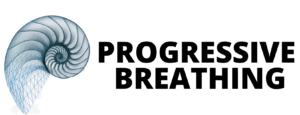The Health Benefits of Nasal Breathing: Nature’s Filter for Optimal Wellness
In the world of wellness, the act of breathing is often taken for granted. Yet how you breathe can have profound effects on your overall health and energy levels. Nasal breathing, as opposed to mouth breathing, is not just a default mechanism—it’s a carefully designed system that protects, purifies, and optimizes the air you breathe. Let’s dive into the science and basics of nasal breathing, its incredible benefits, and how to keep this essential system functioning at its best.
Nasal Breathing Basics: A Natural Air Conditioner
Nasal breathing is far more than simply taking air through your nose—it’s a sophisticated filtration and conditioning process that prepares the air for your lungs. Here’s how it works:
1. Protection Through Filtration
The nose is equipped with tiny hairs called cilia and a mucus membrane lining. Together, these act as your body’s first line of defense:
- Cilia trap dust, pollen, and other airborne particles, preventing them from reaching your lungs.
- Mucus membranes capture smaller particles and microorganisms, while also containing enzymes that neutralize harmful pathogens.
This protective mechanism significantly reduces your exposure to pollutants and allergens, making nasal breathing essential for respiratory health.
2. Purifying the Air
The sinus ducts, lined with mucus-producing cells, ensure that the air entering your body is clean. Mucus captures bacteria and viruses, while the immune cells in the nasal lining actively fight infections. This constant purification process supports your immune system and reduces your risk of respiratory illnesses.
3. Warming or Cooling the Air
The nose also acts as an air conditioner:
- In cold environments, the nasal passages warm the incoming air, protecting sensitive lung tissues.
- In hot climates, the nose cools and moistens the air, preventing dehydration of the airways.
This thermoregulation ensures your lungs receive air at the optimal temperature and humidity for efficient gas exchange.
4. Humidification and Pressure Regulation
Dry air can irritate the lungs, but nasal breathing ensures the air is properly humidified. The mucus membrane adds moisture to the air, keeping your respiratory tract comfortable and healthy.
Additionally, the nasal passages create a slight resistance, naturally pressurizing the air. This resistance encourages optimal oxygen-carbon dioxide exchange in the lungs and improves blood gas balance.
The Role of Balanced Blood Gases in Cellular Oxygenation
When you breathe through your nose, the proper balance of oxygen (O2) and carbon dioxide (CO2) is maintained in your blood. Here’s why this balance is crucial:
- Carbon Dioxide’s Role: CO2 is often misunderstood as a waste gas, but it’s vital for regulating how oxygen is released to your cells. A balanced CO2 level ensures that hemoglobin releases oxygen efficiently, improving cellular energy production.
- Improved Oxygenation: Nasal breathing optimizes this process, ensuring your cells receive the oxygen they need to function at their best. The result? Increased energy, better mental clarity, and improved physical performance.
The Sinus Ducts and Mucus Membranes: Keeping the Pathways Clear
Common Causes of Blockages
Despite its efficiency, the nasal system can become clogged due to:
- Allergies: Pollen, dust, and other irritants can cause inflammation and excess mucus production.
- Infections: Sinus infections lead to swelling and congestion, hindering airflow.
- Dehydration: Lack of hydration thickens mucus, making it harder to clear.
- Poor Air Quality: Pollutants and dry air can irritate the mucus membranes, causing blockages.
How to Alleviate Blocked Sinuses
If your nasal passages feel congested, there are several natural methods to restore clarity:
- Hydration: Drink plenty of water to keep mucus thin and flowing.
- Steam Inhalation: Inhaling steam or using a humidifier can loosen mucus and soothe inflamed passages.
- Saline Rinses: A saline spray or neti pot can flush out allergens and mucus, clearing the nasal passages.
- Breathwork Exercises: Techniques like breath-holding or light nasal breathing can help open the airways and improve airflow.
- Dietary Adjustments: Anti-inflammatory foods and reducing dairy intake (if sensitive) can minimize mucus production.
Why Nasal Breathing Basics Matters in Modern Life
In today’s world, mouth breathing has become a common habit, often due to stress, poor posture, or chronic nasal congestion. Unfortunately, mouth breathing bypasses the nose’s natural filtration and conditioning processes, leading to:
- Increased exposure to allergens and pathogens.
- Reduced oxygenation efficiency.
- Disrupted blood gas balance.
By practicing conscious nasal breathing, you not only protect your respiratory system but also enhance your overall health and vitality.
Embrace the Power of Nasal Breathing
At Progressive Breathing, we emphasize the importance of nasal breathing in our coaching programs, workshops, and resources. Whether you’re seeking to improve your energy, manage stress, or boost your immune system, mastering nasal breathing can be a transformative step.
Start with small changes—like closing your mouth during everyday activities or incorporating simple nasal breathing exercises—and notice the difference in your energy and focus. Your nose is more than a pathway for air; it’s a powerful tool for health and well-being.
Discover the art and science of breathwork with us at Progressive Breathing. Together, let’s unlock your body’s full potential, one breath at a time.
As a Gift, here’s 3 Free Nasal Breathing Practices to explore.



